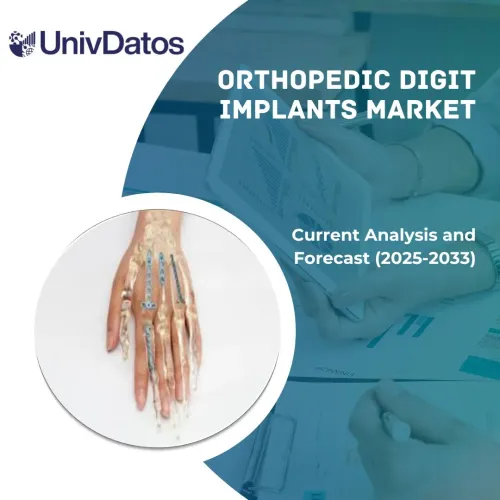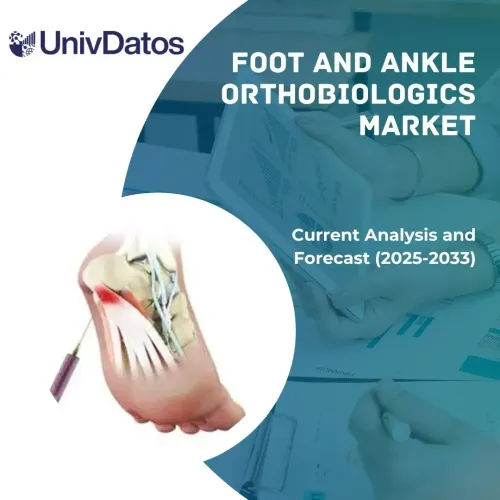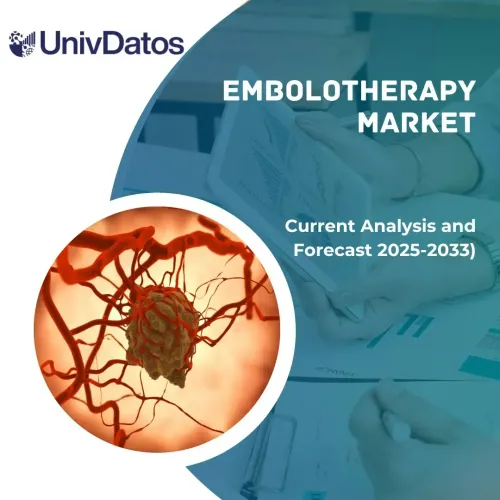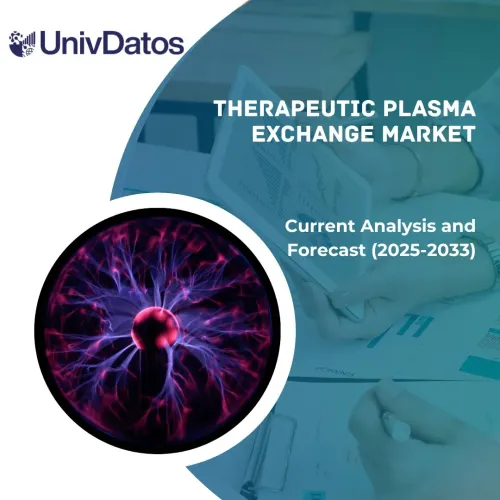- Home
- About Us
- Industry
- Services
- Reading
- Contact Us
VR in Healthcare Market: Current Analysis and Forecast (2025-2033)
Emphasis on Component (Hardware and Software); Application (Pain Management, Education and Training, Surgery, Patient Care Management, Rehabilitation and Therapy Procedures, and Others); Technology (Full-Immersive, Semi-Immersive, and Non-Immersive); End-User (Hospitals, Clinics & Surgical Centers, Research Organizations & Pharma Companies, Government & Defense Institutions, and Research & Diagnostics Laboratories); Region/Country.
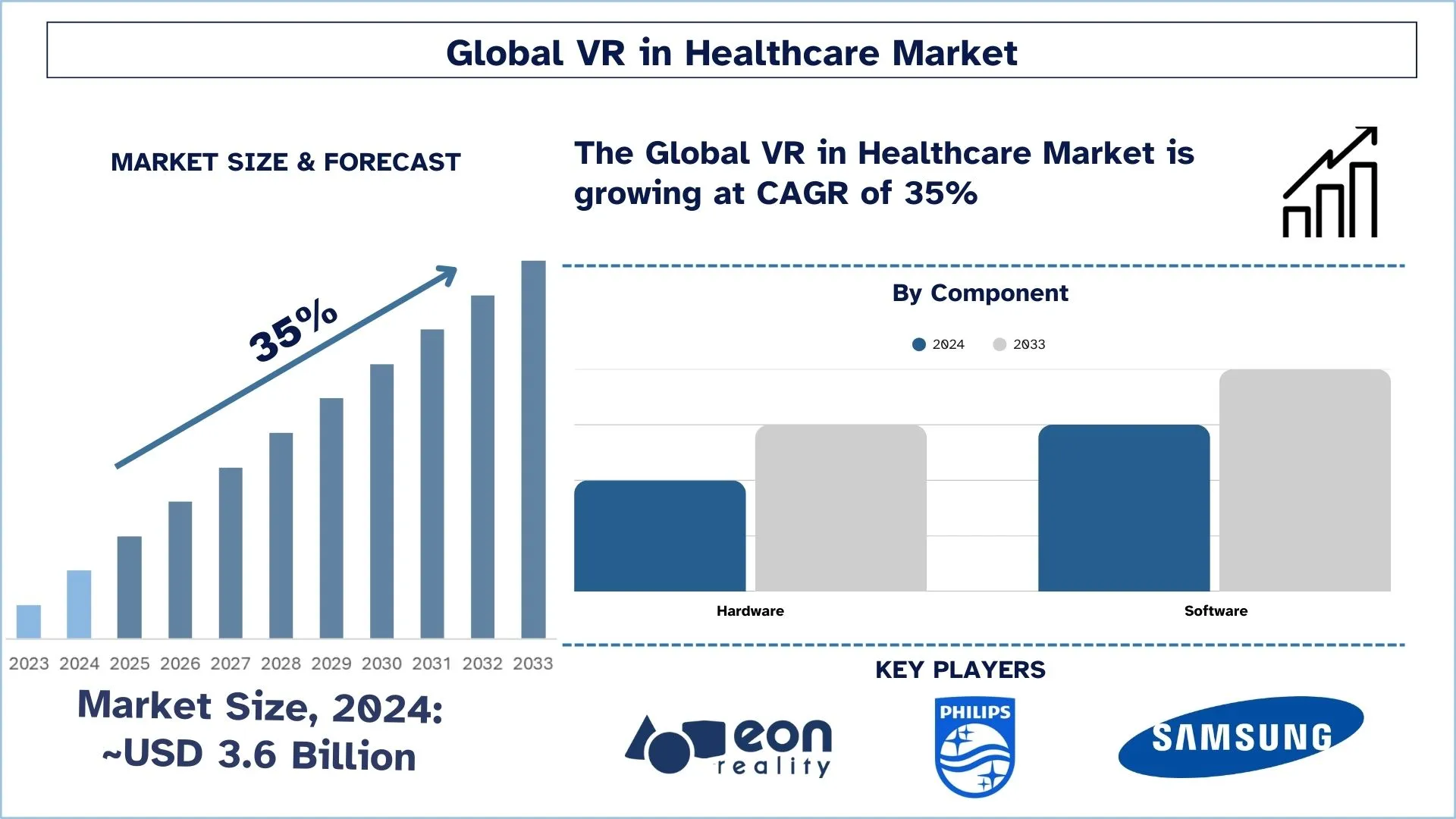
VR in Healthcare Market Size & Forecast
The VR in Healthcare Market was valued at approximately USD 3.6 billion in 2024 and is expected to grow at a substantial CAGR of around 35% during the forecast period (2025-2033), owing to the increasing application of VR in patient treatment.
VR in Healthcare Market Analysis
Virtual Reality (VR) is a computer technology that can create a simulated environment, and it is also an all-enveloping artificial and fully immersive experience that obscures the natural world. VR technology is a growing force beyond entertainment and an important tool in the medical sector, education, science, commerce, manufacturing, and more.
Virtual reality (VR) technology is very useful for surgeons and other healthcare professionals for better diagnostic & treatment facilities. Major factors such as increased precision and accuracy during surgical procedures, better visibility & access provided to the physician, accurate diagnosis of the disease condition, suitable selection of the line of treatment, and digitalization in the healthcare sector will be driving the growth of the market during the forecast period. For instance, in March 2021, AppliedVR, based in Los Angeles, raised USD 29 million to create pain-relieving digital treatment using virtual reality technology. It saw a 42% reduction in severe pain in the studies.
VR in Healthcare Market Trends
This section discusses the key market trends influencing the various segments of the VR in the Healthcare market as identified by our research experts.
Increasing Adoption of VR for Medical Training and Patient Therapy
The market prominence of immersive technologies increases throughout healthcare because they enhance both medical education and patient care programs. Medical institutions, together with hospitals, implement virtual reality technology to manage difficult surgeries and boost clinical assessment processes, as well as healthcare professionals' retention of medical skills. Healthcare institutions now integrate virtual reality systems into therapeutic procedures that support both pain control techniques, along with physical recovery and mental health care, and phobic exposure procedures. Healthcare systems are undergoing a shift because patients seek safer, cost-effective alternative approaches to traditional treatment and training methods, which brings a new transformation to healthcare delivery and patient experience.
VR in Healthcare Industry Segmentation
This section provides an analysis of the key trends in each segment of the global VR in Healthcare market report, along with forecasts at the global, regional, and country levels for 2025-2033.
The Pain Management Market Holds the Largest Share of the VR in Healthcare Market.
Based on application, the market is segmented into pain management, education and training, surgery, patient care management, rehabilitation and therapy procedures, and others. The pain management market is expected to witness robust CAGR during the forecast period. Virtual reality (VR) has been used to manage pain and distress associated with a wide variety of known painful medical procedures. In clinical settings and experimental studies, participants immersed in a VR experience reduced levels of pain and general distress/unpleasantness and reported a desire to use VR again during painful medical procedures.
The Hospital's Premises Segment is Expected to Witness a Higher CAGR in the VR in Healthcare Market.
Based on end-user, the market is categorized into hospitals, clinics & surgical centers, research organizations & pharma companies, government & defense institutions, and research & diagnostics laboratories. Among these, hospitals, clinics & surgical centers held a significant share of the market in 2024. This is mainly due to the Increasing adoption of connected devices in the healthcare sector, rising demand for these VR technologies for accuracy, training for medical professionals, and better treatment in hospitals, and increasing cases of cancer, neurological diseases, and complicated surgical procedures.
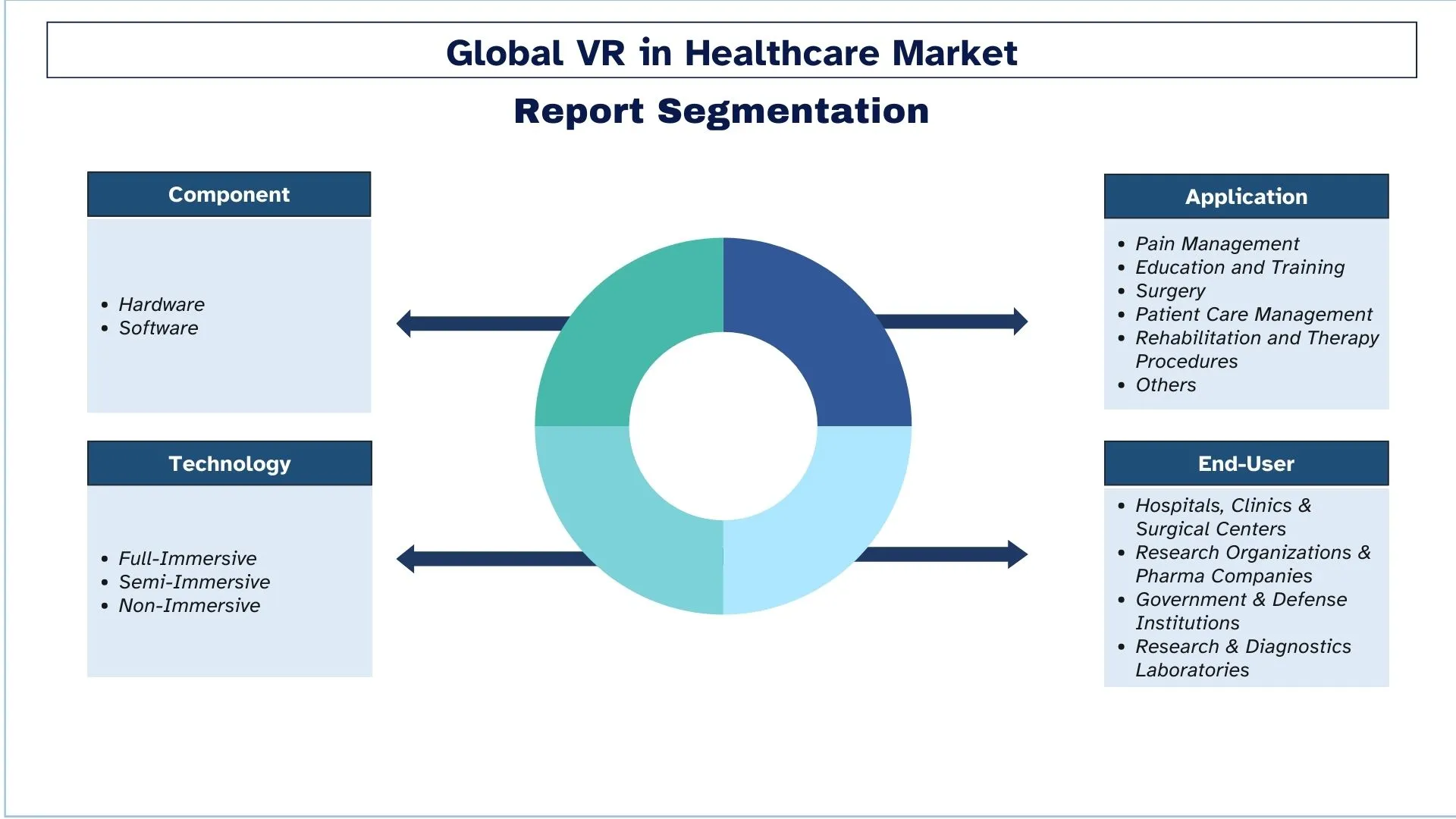
North America has a significant share of the market in 2024.
North America is anticipated to grow at a substantial CAGR during the forecast period. This is mainly due to the increased use of innovative technologies, financial support for R&D, and helpful government initiatives. The U.S. government’s National Institute of Health is providing funding for virtual reality research with a focus on healthcare. Furthermore, due to rising pressure from payers and healthcare providers to lower treatment costs, there is an increase in North America in the outsourcing of healthcare IT services. This factor has positively impacted the growth of the market for virtual reality in healthcare in the region.
U.S. Dominates the North American VR in Healthcare Market
The U.S. healthcare VR market experiences rapid growth due to the increase in immersive technologies used for medical simulation training, together with surgical practice and pain therapy, and mental health applications. VR continues to emerge as a breakthrough healthcare tool because healthcare providers adopt it rapidly, while hardware and software technologies become progressively advanced. The U.S. market benefits from principles of digital health alongside supportive innovation policies but also from rising demand for non-invasive medical solutions that implement technology throughout the national healthcare system.
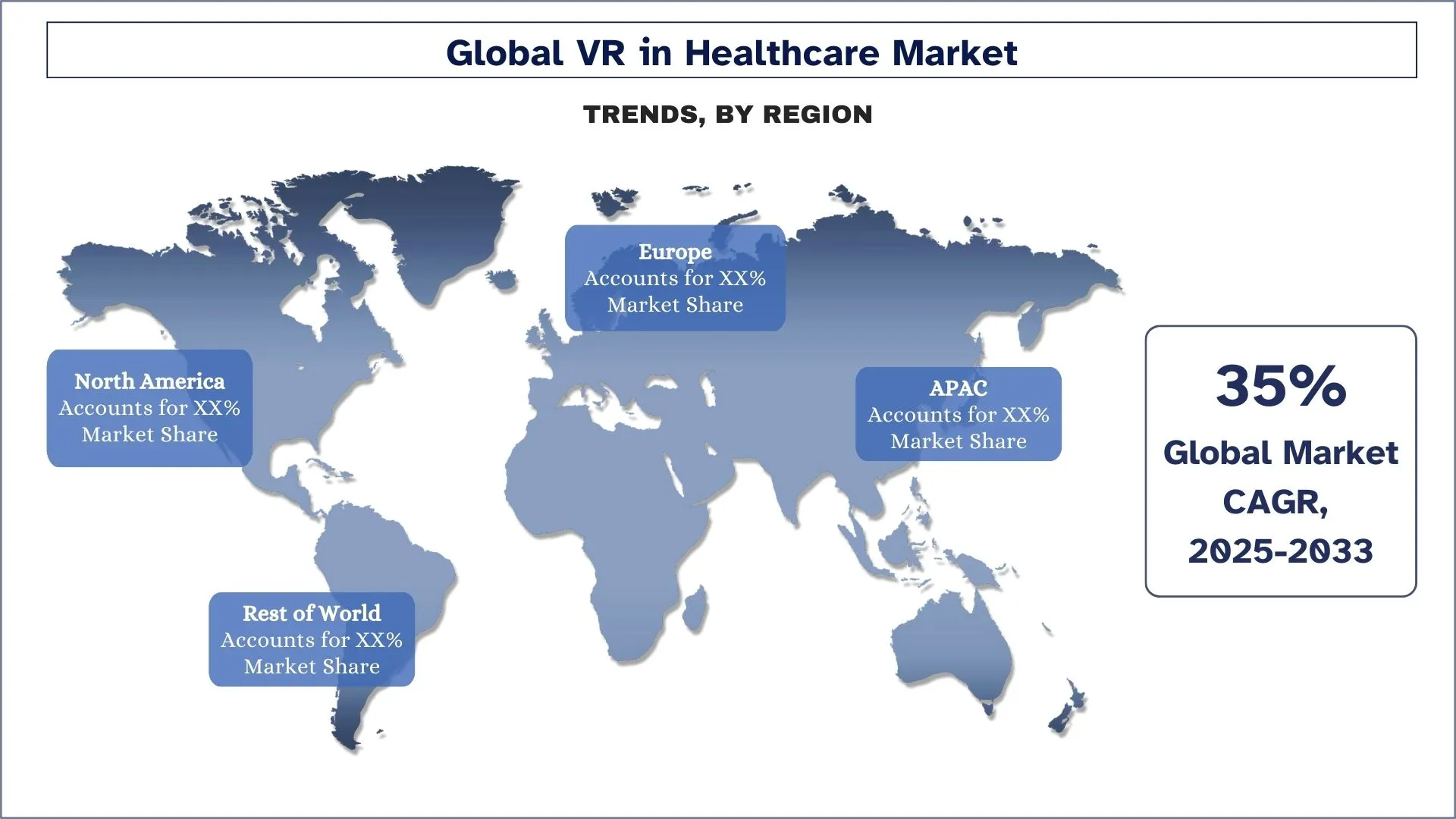
VR in the Healthcare Industry Competitive Landscape
The VR in Healthcare market is competitive, with several global and international players. The key players are adopting different growth strategies to enhance their market presence, such as partnerships, agreements, collaborations, new product launches, geographical expansions, and mergers and acquisitions.
Top VR Manufacturing Companies in Healthcare Industry
Some of the major players operating in the market are Koninklijke Philips N.V.; SAMSUNG; EON Reality; CAE Inc., EchoPixel; Medical Realities Ltd.; XRHealth USA, INC.; PSICO SMART APPS, S.L.; HTC Corporation; and Sony Corporation
Recent Developments in the VR in Healthcare Market
May 2024: Sony Group Corporation completed its strategic collaboration with Siemens to introduce virtual reality headsets for the industrial metaverse ecosystem by December 2024. The new launch is currently integrated with Siemens’ engineering design platform NX.
March 2024: Siemens Healthineers introduced an application dedicated to Apple Vision Pro, enabling clients such as medical students, surgeons, and patients to view interactive holograms of the human body. These medical scans captured in real-time are expected to help in medical training, surgical planning, and help patients visualize procedures.
November 2023: Royal Philips partnered with NYU Langone Health, an academic medical center, to improve patient care through additional innovation. With the new approach, NYU Langone healthcare professionals would collaborate in real-time and further enhance the patient’s experience via diagnosis and treatment at speed and enhanced outcomes.
VR in Healthcare Market Report Coverage
Report Attribute | Details |
Base year | 2024 |
Forecast period | 2025-2033 |
Growth momentum | Accelerate at a CAGR of 35% |
Market size 2024 | USD 3.6 Billion |
Regional analysis | North America, Europe, Asia-Pacific, Rest of the World |
Major contributing region | North America is expected to grow at the highest CAGR during the forecasted period. |
Key countries covered | U.S., Canada, Germany, France, UK, Spain, Italy, China, Japan, and India |
Companies profiled | Koninklijke Philips N.V.; SAMSUNG; EON Reality; CAE Inc., EchoPixel; Medical Realities Ltd.; XRHealth USA, INC.; PSICO SMART APPS, S.L.; HTC Corporation; and Sony Corporation |
Report Scope | Market Trends, Drivers, and Restraints; Revenue Estimation and Forecast; Segmentation Analysis; Demand and Supply Side Analysis; Competitive Landscape; Company Profiling |
Segments Covered | By Component, By Application, By Technology, By End-User, By Region/Country |
Reasons to Buy the VR in Healthcare Market Report:
The study includes market sizing and forecasting analysis validated by authenticated key industry experts.
The report presents a quick review of overall industry performance at a glance.
The report covers an in-depth analysis of prominent industry peers with a primary focus on key business financials, product portfolios, expansion strategies, and recent developments.
Detailed examination of drivers, restraints, key trends, and opportunities prevailing in the industry.
The study comprehensively covers the market across different segments.
Deep dive regional-level analysis of the industry.
Customization Options:
The global VR in the Healthcare market can be customized further as per the requirement or any other market segment. Besides this, UnivDatos understands that you may have your own business needs; hence, feel free to contact us to get a report that completely suits your requirements.
Table of Content
Research Methodology for the VR in Healthcare Market Analysis (2023-2033)
We analyzed the historical market, estimated the current market, and forecasted the future market of the global VR in Healthcare market to assess its application in major regions worldwide. We conducted exhaustive secondary research to gather historical market data and estimate the current market size. To validate these insights, we carefully reviewed numerous findings and assumptions. Additionally, we conducted in-depth primary interviews with industry experts across the VR in Healthcare value chain. After validating market figures through these interviews, we used top-down and bottom-up approaches to forecast the overall market size. We then employed market breakdown and data triangulation methods to estimate and analyze the market size of industry segments and sub-segments.
Market Engineering
We employed data triangulation techniques to finalize the overall market estimation and derive precise statistical numbers for each segment and sub-segment of the global VR in the Healthcare market. We split the data into several segments and sub-segments by analyzing various parameters and trends, including component, application, technology, end-user, and regions within the global VR in Healthcare market.
The main objective of the Global VR in Healthcare Market Study is to
The study identifies current and future trends in the global VR in Healthcare market, providing strategic insights for investors. It highlights regional market attractiveness, enabling industry participants to tap into untapped markets and gain a first-mover advantage. Other quantitative goals of the studies include:
Market Size Analysis: Assess the current and forecast market size of the global VR in Healthcare market and its segments in terms of value (USD).
VR in Healthcare Market Segmentation: The study segments the market by component, application, technology, end-user, and region.
Regulatory Framework & Value Chain Analysis: Examine the regulatory framework, value chain, customer behavior, and competitive landscape of VR in the healthcare industry.
Regional Analysis: Conduct detailed regional analysis for key areas such as Asia Pacific, Europe, North America, and the Rest of the World.
Company Profiles & Growth Strategies: Company profiles of VR companies in the Healthcare market and the growth strategies adopted by the market leaders to sustain the fast-growing market.
Frequently Asked Questions FAQs
Q1: What is the VR in Healthcare market's current size and growth potential?
As of 2024, the global virtual reality (VR) in healthcare market is valued at USD 3.6 billion. It is expected to grow at a CAGR of 35% through 2033, driven by increased adoption in medical training, pain therapy, and patient rehabilitation.
Q2: What are the driving factors for the growth of VR in the Healthcare market?
Rising demand for innovative, non-invasive treatment and training tools is propelling VR adoption, supported by technological advancements, reduced hardware costs, and improved healthcare infrastructure globally.
Q3: Which segment has the largest share of the VR in the Healthcare market by application?
The pain management segment currently holds the largest market share by application segment.
Q4: What are the major trends in the VR in Healthcare market?
Medical institutions increasingly adopt VR simulations for surgical training and therapy, enhancing clinical precision, patient engagement, and healthcare education through immersive, interactive, risk-free environments.
Q5: Which region will dominate the bone sonometer market?
North America leads the global VR in Healthcare market.
Q6: What are the biggest challenges in the VR in Healthcare market?
High implementation costs, limited clinical validation, and resistance from traditional healthcare systems hinder the widespread adoption of VR solutions in mainstream medical practice and hospital workflows.
Q7: Who are the Top players in the global VR in Healthcare market?
The leading companies driving innovation in VR in Healthcare include:
• Koninklijke Philips N.V.
• SAMSUNG
• EON Reality
• CAE Inc.
• EchoPixel
• Medical Realities Ltd.
• XRHealth USA, INC.
• PSICO SMART APPS, S.L.
• HTC Corporation
• Sony Corporation
Q8: What are the most promising investment areas in VR in the healthcare industry?
Key investment areas include surgical simulation platforms, mental health therapy applications, VR-based physical rehabilitation tools, and immersive medical training programs. These segments are gaining traction due to rising demand for remote, tech-enabled healthcare solutions.
Q9: How can companies stay competitive in the evolving VR healthcare landscape?
Companies can maintain a competitive edge by investing in clinical validation, ensuring regulatory compliance, forming strategic healthcare partnerships, and integrating AI and haptic feedback to enhance VR user experiences.
Related Reports
Customers who bought this item also bought





